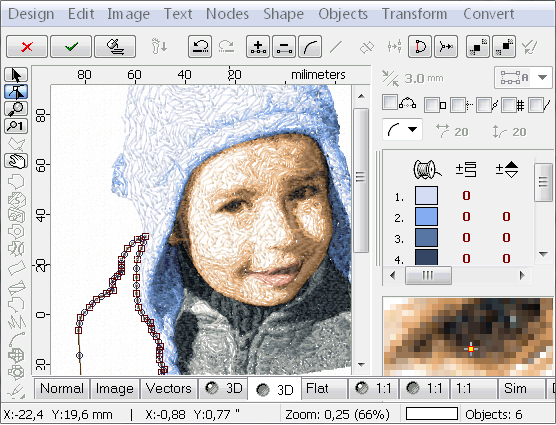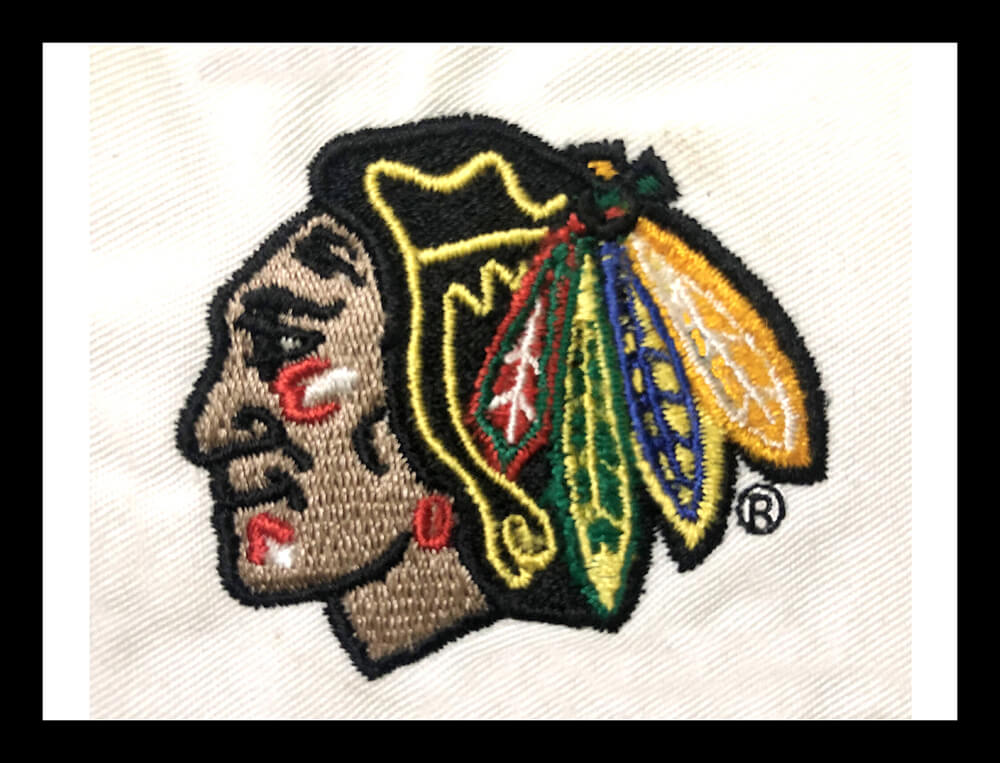Comprehensive Digitizing for Embroidery: From Design to Stitch
Streamlining the Art of Needlework Digitizing: Step-by-Step Overview
Embroidery digitizing is a precise craft that demands precision and creativity. As technology continues to advance, the digitization procedure has actually come to be a lot more easily accessible, permitting lovers to bring their elaborate designs to life with ease. In this guide, we will unravel the complexities of needlework digitizing, damaging down each action systematically to streamline the process and equip both novices and experienced embroiderers alike. Stay tuned to discover how you can streamline this complex art type and transform your creative visions into perfectly stitched masterpieces.
Comprehending Embroidery Digitizing Software Program
Embroidery digitizing software application works as an important device for changing elaborate layouts into electronic formats suitable with needlework machines, assisting in precise stitching and modification. This specialized software enables customers to import various image data layouts, such as JPG or PNG, and transform them into embroidery machine-readable formats like DST, EXP, or PES - Digitizing for Embroidery. By using attributes like stitch editing, underlay choices, and string shade option, digitizing software allows individuals to manage every facet of the style procedure
In addition, progressed needlework digitizing software offers tools for producing complicated layouts, readjusting stitch thickness, and including intricate details. Users can likewise sneak peek the layout before stitching it out, making sure precision and minimizing mistakes. Furthermore, lots of software application give automated functions that assist enhance the digitizing process, saving effort and time.
Comprehending the abilities of embroidery digitizing software is vital for accomplishing top notch lead to embroidery projects. By understanding this device, needlework lovers and professionals can release their creative thinking and bring detailed layouts to life with accuracy and effectiveness.

Choosing the Right Style Documents
After familiarizing yourself with the abilities of needlework digitizing software program, the next critical action in the process is selecting the right design declare your project. Digitizing for Embroidery. When choosing a design apply for needlework digitizing, it's important to take into consideration the intricacy of the layout, the dimension of the end product, and the kind of fabric you will be working with
For complex layouts with great information, a high-resolution photo or vector documents is recommended to make sure that the needlework maker can precisely replicate the layout. In addition, the dimension of the final product plays a substantial duty in picking the ideal design documents. Bigger layouts might require greater resolution documents to maintain clarity and intensity.
Furthermore, the kind of textile you will be stitching on affects the choice of style data. Various fabrics might call for adjustments in the style documents to ensure that the stitches are correctly straightened and the design looks like planned. By carefully choosing the appropriate design data based upon these factors, you can set on your own up for an effective needlework digitizing process.
Digitizing Devices and Techniques
Using specialized software program and precision methods, digitizing devices are essential in changing detailed designs right into embroidery-ready documents. Embroidery digitizing software application, such as Wilcom, Hatch, or Embrilliance, provides the required system to convert art work right into stitch data. These programs use attributes like stitch modifying, underlay choices, and text tools to make sure the layout converts seamlessly onto fabric.
Among the vital strategies in digitizing is developing a clear course for the needlework maker to comply with. This includes digitizing each element of the design with accuracy, establishing stitch kinds, thickness, and directions. By utilizing tools like digitizing tablets or software-specific plugins, embroiderers can achieve a high degree of precision in their digitized styles.
Additionally, mastering the art of underlay sewing is crucial for generating top quality needlework. Underlay stitching stabilizes the fabric and develops a structure for the style, guaranteeing that the final item is both aesthetically attractive and resilient. By comprehending these digitizing devices and strategies, embroiderers can raise their craft and bring elaborate designs to life with accuracy and view website performance.
Tailoring Stitch Kinds and Instructions
The selection of stitch types can significantly impact the general appearance and structure of the embroidered style. By tactically integrating these stitch types, embroiderers can attain depth and measurement in their designs.
Additionally, the instructions of stitches plays an important duty in enhancing the visual allure of the final needlework. Numerous stitch directions can add structure, emphasize details elements, and produce visual passion. Altering the angle of stitches can imitate movement or natural patterns like fur or feathers. By try out various stitch angles and patterns, embroiderers can bring their layouts to life with remarkable detail this content and complexity. Understanding the art of customizing stitch types and directions equips embroiderers to release their creativity and boost the top quality of their job.
Testing and Refining Your Digitized Design
To ensure the precision and top quality of your digitized layout, thorough testing and improvement are crucial actions in the needlework digitizing procedure. As soon as you have actually completed the digitization of your design, it is essential to test it before waging the real needlework. Examining permits you to recognize any type of prospective problems such as thread breaks, sew thickness issues, or style distortions that may affect the last outcome.

After screening, it is essential to refine your digitized design based upon the comments from the test sew-out. This might include tweaking stitch setups, changing densities, or making adjustments to the total style to accomplish the desired outcome. By repeating with testing and improvement, you can tweak your digitized style to excellence before moving on with the real embroidery procedure.
Verdict
In final thought, mastering the art of needlework digitizing requires a comprehensive understanding of the software, choosing the right layout file, making use of digitizing tools and strategies, customizing stitch kinds and directions, and screening and refining the digitized style. By adhering to these steps, embroiderers can streamline the digitizing process and produce premium stitched designs with accuracy and efficiency.